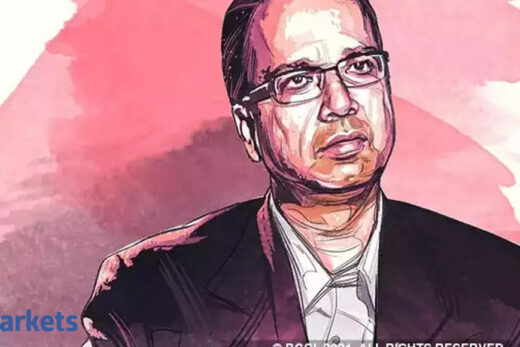Where is the market headed directionally? The aberration on the US 10-year yield makes one wonder how long emerging market inflows would continue?
We are already near peak levels. The market in the last few days has traded sideways. But the momentum is still in favour of markets rising simply because we have the macroeconomic input coming in quite favourably. So inflation is well under control. The government is spending in a large manner to revive the economy. We have already seen results coming out really good. As far as US Fed interest rates are concerned, there is a bit of a worry but the kind of overall interest that the Indian market is attracting relative to the other markets is such that we think FII investments will continue to pour in irrespective of how the Fed rate moves now onwards.
So, I am not unduly worried because the ball is in India’s court. In a way, the macroeconomic development and the numbers thereof are suggesting that we have sharpened the earnings growth outlook. There could be further upgrades as we go forward. The momentum for the market is favourably poised on the upside.
What is the outlook on the entire telecom basket? board meet is focusing on their strategic plans for the future, the subsidiaries, the shareholding structure. What are you expecting from that board meet? Also how would the PLI schemes impact stocks like Tejas Networks, D-Link, some of the telecom hardware providers?
The prospects of the telecom companies are directly linked to the ARPUs right now. They have traditionally been weak but in the last five or six quarters, there has been a quarter-on-quarter increase in the ARPUs even from a player like Vodafone which was losing subscribers. The industry as a whole is doing relatively better on the ARPU metric which is the first and foremost thing to look for in telecom companies.
Second, given the quarter-on-quarter rise in ARPU, are these companies generating enough cash to take care of their debt on the balance sheet and still leave some room for future expansion and in future technologies such as 5G? We find that most of these companies have done relatively better when it comes to the balance sheet metric of their net debt, net debt/EBITDA metric or even from a debt/equity kind of metric. Though they are not out of the woods yet, these numbers are comfortable relative to what they were in the past. So the future growth into newer technologies particularly 5G will be better enabled because they will be able to raise financial resources adequately for that growth.
Regarding the PLI scheme for telecom companies, of course, it is essentially meant for encouraging manufacturing activities in the country. Telecom is a service activity and therefore it is the back end of the telecom services which is on the hardware side. The other is I am not too sure whether that will really work for the industry which is crucially dependent both on technology as well as critical component inputs from abroad. That is something we need to be cognisant of while designing a scheme because we cannot leapfrog into technology space just like that overnight. It takes a huge amount of resource mobilisation as well as technological background work to be able to do that.
So I do not think that the introduction of a PLI scheme is going to affect the telecom companies per se. I just want to look at how the companies are able to raise better resources for newer technologies. Bharti Airtel is talking about reorganising its structure so that it becomes leaner in certain pockets, making it easier for them to raise money. All these moves that the telecom companies are making will have a positive outcome going forward for shareholders.
What could be the next possible trigger for Reliance?
There are two things to look forward to when it comes to Reliance; number one is what happens to their 5G play? We need to closely watch how they deploy their 5G technology and at what price. Secondly, as I argued sometime back,. ARPU for telecom companies has to rise and we expect a substantial price increase by the telecom companies in the next one or two months. The typical expectation is Reliance would lead that price increase. It is only the telecom vertical which will drive Reliance ahead the way we see it, the petrochemicals or the oil to chemicals (O2C) business is in a steady state. Rising crude oil prices negates the effect of their business temporarily for a while but after two-three months, they would be able to get back into that profitability zone both in terms of GRM as well as the EBITDA margins that they have in the petchem side.
When it comes to the retail vertical right now, there is nothing much to hope for. They have signed into the deal with Future Retail but it is under litigation and unless that litigation is completely over, the progress thereof, the deployment of their strategies on the retail side will be held back a bit. I would guess that news related to the telecom vertical is what will keep driving the stock up. One disclaimer here, I own the stock.
What is the outlook when it comes to the capital goods sector? Are you buying into the long-term story when it comes to capital goods?
On the capital goods front, the momentum is as strong as it has been in the past. I do not see a material uptick as of now. But having said that, the budget has made big announcements in terms of allocations towards the infrastructure space — be it roads, be it rail or even for that matter on the health side and the biggest jump that we are seeing on the ground is the gas pipeline laying activity is upbeat as are the water and sanitation projects. But we do not still see that kind of positivity being shared on the road side or even on the railways side.
While most of the investments have happened, there is still a stickiness when it comes to actual execution of the projects. Therefore, when it comes to the capital good side, you have to be very careful about whether it is a product company or a services company. We are more focussed on companies which are product-oriented and not service-oriented on the capital goods side. That service would mean essentially construction activities and therefore look at the capital goods sector with a little bit of caution despite the optimism.
What your outlook is when it comes to the FMCG basket?
One good news for the FMCG companies is that during the lockdown phase, they were not able to reach their retailers and distributors in a large manner and in January and February, they are able to reach their entire network 100%. For FMCG companies, reach is what matters most because better profitability is achieved through volume growth. Can we expect better profitability ahead or margin expansion? That is one great news that you have for FMCG companies. But along with that, there is also this prospect of margins compressing because of rise in commodity prices — be it vegetable oil or crude oil.
Virtually most of the commodities that go into making an FMCG product is going up and the ability to raise prices does not exist at this juncture today. They eventually would be able to raise prices to recoup the margin losses. Having said that, the only positive therefore is between these two things – the 100% reach they are able to manage versus the margin compression. They are still on the better side because the volume is still growing quite well. So we would tend to remain positive a little overweight on the FMCG sector relative to the others. We would look at those FMCG companies which are more into everyday essentials, rather than the newer products line up kind of companies. Home care product companies will do better relative to the others.



